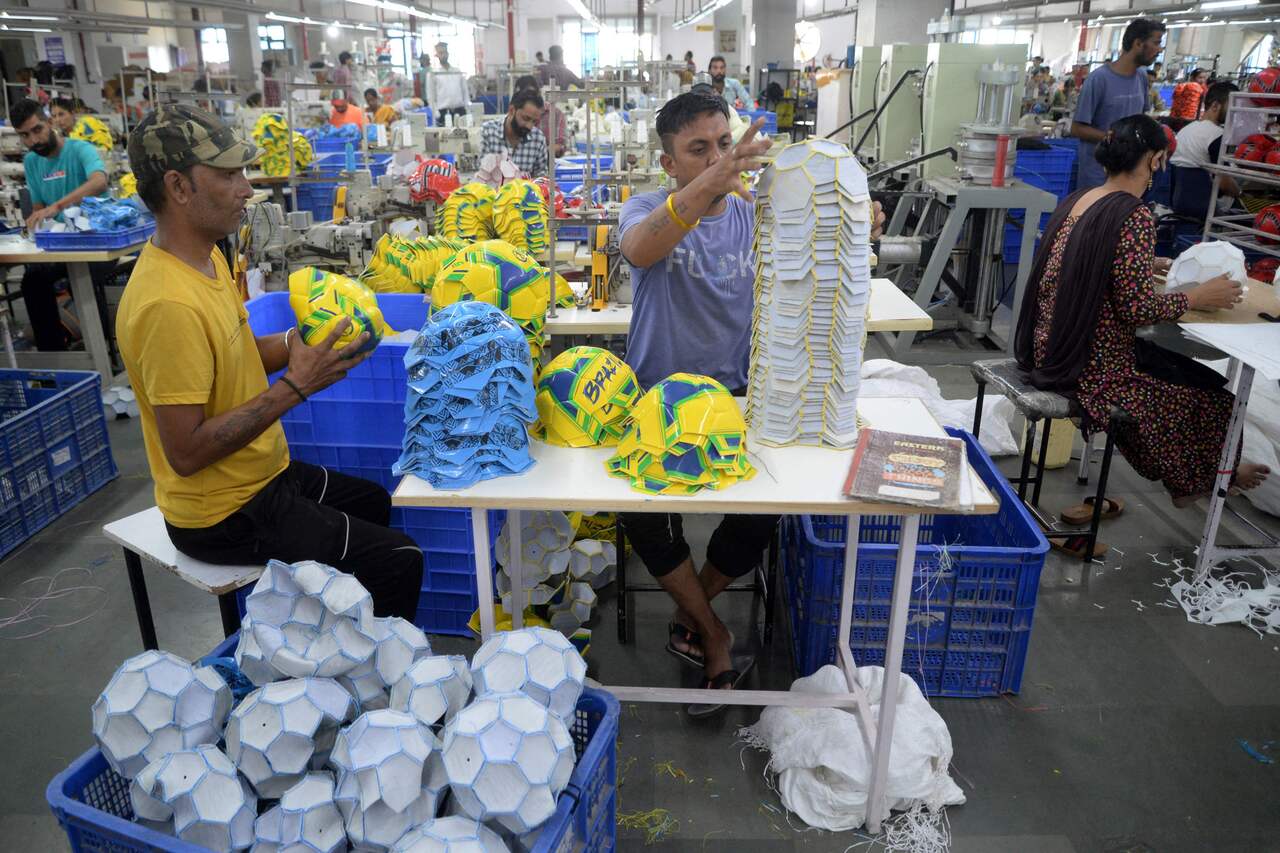India's economy grows at fastest pace in a year
Sign up now: Get insights on Asia's fast-moving developments

India's GDProse 13.5 per cent in the April-June period from a year ago.
PHOTO: AFP
Follow topic:
NEW DELHI (BLOOMBERG, AFP) - India's economy expanded at the quickest pace in a year, boosting the central bank's scope to focus on fighting inflation.
Gross domestic product rose 13.5 per cent in the April-June period from a year ago, data released by the Statistics Ministry on Wednesday (Aug 31) showed.
The increase reflects a dramatic uptick in activity since mid-2021, when the peak of the country’s most devastating coronavirus wave began to recede.
That outbreak saw thousands of people dying across India each day, overwhelming hospitals and crematoriums, and came after an extended lockdown that pummelled consumer spending and brought factories to a standstill.
Wednesday’s figure was the highest since the 20.1 per cent expansion recorded during the same period last year, at a time when business activity was recovering from government shutdown edicts.
But the result is well below the 16.2 per cent forecast by the Reserve Bank of India (RBI), the country’s central bank, with inflation and other indications of economic weakness dragging down performance.
While India remains the world's fastest-growing economy, the pace of growth is seen moderating going forward due to global recession fears and rising borrowing costs.
The central bank has raised the benchmark policy rate by 140 basis points in three rates moves since May and has vowed to do more to bring inflation under its 6 per cent target ceiling.
“The numbers are lower than we expected,” State Bank of India chief economic advisor Soumya Kanti Ghosh said.
He added that the RBI would most likely revise down its 7.2 per cent growth forecast for the year to March 2023, with weakness in the manufacturing sector a cause for concern.
Elevated crude oil prices and a 7 per cent fall in the rupee this year have left India struggling with a deteriorating trade balance.
India’s merchandise trade deficit widened to a record US$31 billion in July, compared to US$10.6 billion in the same month last year, provisional data showed.
Import costs, led by petroleum products and coal, were more than twice as high as export revenues.
India imports more than 80 per cent of its crude oil needs, and shocks to the market since Russia’s invasion of Ukraine have left its 1.4 billion people struggling with higher fuel charges.
Consumer inflation has consistently overshot the central bank’s 2 to 6 per cent target range this year, hitting an eight-year high of 7.79 per cent in April before cooling to 6.71 per cent in July.
But Bank of Baroda chief economist Madan Sabnavis said household spending had remained resilient because of pent-up demand left over from the shock to the economy during the pandemic.
“Normally with high inflation, purchasing power comes down, but that doesn’t seem to have played out so far,” he said.
But Bank of Baroda chief economist Madan Sabnavis said household spending had remained resilient because of pent-up demand left over from the shock to the economy during the pandemic.
“Normally with high inflation, purchasing power comes down, but that doesn’t seem to have played out so far,” he said.
The International Monetary Fund last month slashed its growth outlook for India to 7.4 per cent, a figure that still exceeds every other major economy besides Saudi Arabia.

